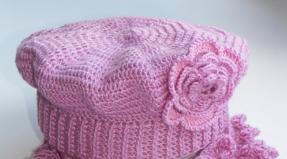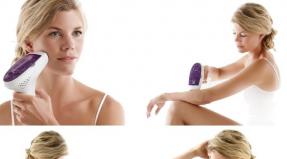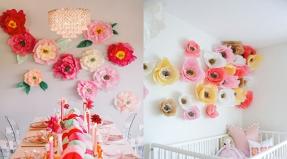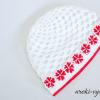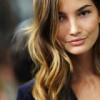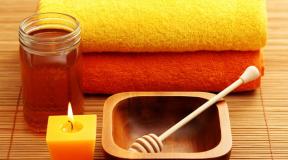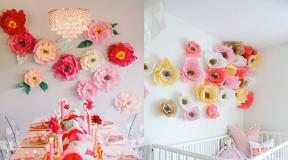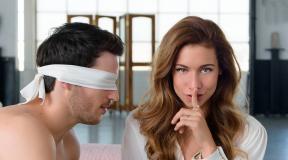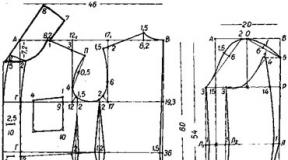How to do hair bronzing at home. Perfect hair bronzer at home - it's easy
Bronzing your hair at home will be a good alternative to a salon procedure, because it will cost you much less.
Today you can see what bronding on hair looks like in any photo in a magazine, because this procedure has gained popularity, including among world-famous stars.
Bronding is similar to highlighting or coloring - after this procedure, the hair acquires not one, but several shades at once; usually a combination of dark and light tones is done on the strands, which as a result looks very beautiful.
Thanks to bronzing, you can create a soft color transition on your hair, for example, from light to chocolate or coffee.





In poor lighting, this effect may be almost invisible, but in the sun such strands will play with bright highlights. You can see what bronding looks like on hair in the photo.
The advantages of the procedure include, first of all, a natural effect.
The curls do not look dyed, there is no clear transition or unnatural colors - high-quality bronding can be completely visually invisible - it will simply be visible that the hair shimmers in different shades.
Bronzing hair is, without a doubt, a fashionable procedure, as evidenced by photos of celebrities with bronzed hair on magazine covers.
Another advantage of this type of dyeing is that the dye does not differ much from the natural color of the strands, so the regrown roots will be almost invisible.
Many people use the bronzing technique to smooth out the transition from dye color to their natural color when growing out their curls.






In addition, with the help of bronding you can solve problems such as sparse or thin hair, because... it creates the additional necessary volume.
This coloring can most often be found on straight hair, but it will look great on wavy hair. The only exception is curly hair.
The armoring looks invisible on them. Very often, the bronding procedure is followed by hair lamination, which helps to consolidate the effect and maintain it longer.
Bronzing can be done on hair of any color, but you need to understand that on dark hair it will look less noticeable than on light hair.
If the strands are black, then it is better to choose highlighting or coloring - they will be more noticeable on the hairstyle.



How is the procedure done at home?
So, the main goal of the bronding procedure is to achieve a smooth transition of different shades on the hair, while the difference between all colors should be no more than 3 tones.
Hair bronding can be done in two directions: darker or lighter, depending on the natural color of your hair.
Moreover, this applies to both salon and home procedures. Most likely, you will need more than one paint, because there should be at least two tones.
Most often, bronding is done by blondes, because... On light hair, this procedure is most noticeable.
If you want to make a transition to a darker color, then you will need “dark blond” paint and another similar shade, but if the transition should be to a light tone, then “bright blond” or “light blond” paint will do.
The whole procedure takes place in several stages, which are quite easy to repeat on your own at home, so before dyeing your strands, it is recommended to look at photos and videos to understand what steps you need to follow to get the desired result.
Once you have decided on the colors that you will use for the bronding (you can also do this from a photo), you can start coloring.
Since the main color does not change, only individual strands will need to be dyed. At home, the bronding procedure will be similar to highlighting.
The roots need to be dyed in your natural color, or not dyed at all, and then divide the strands according to the areas of their growth, there will be 6 of them in total: a central area, two lateral, two occipital and parietal.
You need to start dyeing your hair from the back of your head. Using the two colors you selected earlier.
You need to start with a darker color: to dye, step back a few centimeters from the roots and color a section of the curl, leaving 5-7 cm for a light tone, which you apply below.
Using this method of coloring, it is possible to create that same “soft” transition between colors.
After you have painted the occipital area, move on to the parietal and lateral areas, and last of all, the bang area is painted.
The strands need to be dyed gradually, applying first dark and then light colors.
There is another option: the lightest strands can be done around the face, creating the effect of burnt hair.
It is better to choose a suitable booking option using a photo in advance so as not to be distracted by this in the future. Don't forget to also watch the video before you start coloring yourself.
As you remember, only some strands need to be dyed, i.e. after completing this stage, you will be left with undyed strands.
They need to be painted using the “painting” technique - applying paint to the strands in a chaotic manner. With its help, you can create visual volume on your hair, as well as make your hairstyle more original.
Lamination after bronding
To ensure that the effect of the procedure lasts longer, experts recommend finishing it with lamination. It, like booking, can be done at home.
To do this, you will need gelatin, which must be diluted in hot water (a spoonful of gelatin in three waters) and half a spoonful of shampoo or balm for everyday care.
The amount of ingredients depends on the length of the hair; here is the amount for medium hair.
After you have poured the gelatin, you need to wait about 20 minutes for it to swell. The mixture should be free of lumps; if they appear, then additionally heat the product in a water bath.
While you are waiting for the gelatin to swell, you should wash your hair and let it dry a little, but do not use a hair dryer.
When 20 minutes have passed, add half a tablespoon of shampoo or balm to the gelatin and mix the mixture thoroughly until smooth.
The resulting mask should be applied to damp hair, starting to distribute it 2 cm below the roots. After you have distributed the mixture along the entire length of the strands, wrap your head with film or a shower cap.
You can also warm your hair with a hairdryer, but only through a towel. You need to keep the mixture on your hair for at least an hour, or better yet two, to achieve a lamination effect.
If you do everything correctly, the curls will become smooth and silky, damaged scales will close, and the strands will not bristle.
In addition, the effect of bronding on the hair will last longer, since lamination creates a protective film around the strands that protects them from external negative influences.
Doing lamination at home is somewhat easier than bronding, but if you have never done this before, it is better to contact a specialist, because there is a risk of not only significantly worsening the appearance of the hairstyle, but also ruining the hair.
Contents of the article:
In the modern world, in pursuit of beauty and uniqueness, young girls and adult women want to look beautiful, well-groomed and natural. This could be applying makeup, nail or eyelash extensions, tattooing, but of course the beauty of hair and hairstyles always comes first. After all, hairstyle is one of the first things that men pay attention to, albeit subconsciously. Beautiful, well-groomed, vibrant and natural hair is what women follow as an example.
So, if you have a desire to turn the natural into something beautiful, then the modern hair coloring technique, bronzing, is ideal for you. Technologies have learned to change colors better and better from year to year, and the ability to obtain the most natural and natural shades is becoming higher and higher. In recent years, the technique of bronding hair has gained more publicity and popularity. What is this? Bronding is the so-called multi-coloring, as a result of which the hair acquires color, a healthy and chic shine.
Just a few years ago, this type of coloring could be done beautifully and efficiently only in expensive salons. But today, the armoring technique is quite accessible at home. This is exactly what we want to tell you about, about the technique of bronzing at home.
Rules for the bronding process at home
- You need to firmly decide for yourself what color you want to achieve (light or dark), and also, do not forget that after bronding your hair can have many shades, but they should not differ much from each other. The meaning of this coloring is that the hair color smoothly transitions from one shade to another. When choosing paint, the difference in shades must be no more than 2-3 tones, otherwise you will end up with regular highlighting.
- You need to prepare for this type of hair coloring in advance. Firstly, remove split ends, and secondly, use masks to restore the hair structure.
- Women with curly hair are better off staying bronzed, because such hair after bronding looks unnatural, ugly and generally untidy.
- The peculiarity of this hair coloring is that it needs to be dyed not from the roots, but at a distance of about 1–1.5 centimeters, which creates an unrivaled volume.
What do you need to have for booking at home?

- a comb with a thin handle, or rather with a tail;
- a cape over the shoulders so as not to stain your neck, back or ruin your clothes;
- gloves for safe application of hair dyes;
- foil so that you can dye your hair one by one without fear of mixing colors;
- brushes for applying paint;
- baths in which paints can be diluted;
- Well, the paint itself in the quantity and shades in which you yourself wish.
Instructions for booking at home

- The very first and most important task is to determine exactly what basic tone your hair should have in the final result. But you also shouldn’t forget about the fact that if your hair has been dyed before, then bronding will have a slightly different result than you hoped for.
- When choosing a dye, do not be greedy, because a good dye that does not contain ammonia is your guarantee of beautiful and unburnt hair in the end result.
- If you want to change the basic tone of your hair, then apply the dye to several strands and always to the roots, not reaching 6-7 cm to the ends of the hair. Well, if you want to stay with your color in the main idea, then you skip step No. 2.
- Here it will be a little more complicated. All hair needs to be divided into 6 particles: bangs, back of the head (two particles), crown, and one on each side near the ears. We begin coloring in the form of highlighting, but not with one, but with two shades of paint, and at the same time we retreat 6-7 cm from the roots and do not paint the same amount of centimeters to the roots. We dye the bottom of the hair in the lightest tone that you chose for your bronding. Be sure to start coloring your hair from the back of the head, since it is the darkest area and the dye needs more time for a good coloring. And so, one by one, all the hair, strand by strand, last of all, dye the hair on the bangs. If you want to emphasize the contours of your face, then in this case you need to remember to lighten the hair strands on both sides of your head. But you don’t need to lighten it very much to avoid the effect of burnt hair.
- This step smooths out sharp transitions, which are very likely to happen when you do booking at home. Open highlighting - “painting” or in other words - drawing on those strands of hair that were not colored during the bronding process will help you correct such mistakes. For the last aspects of bronding, we take the dye from package No. 3, carelessly and chaotically lubricate the hair, resulting in a complete image, a certain logic, depth and sophistication of the new image.
In our country, this coloring technique is still completely new and not every hairdresser can do bronding. To get the perfect result, it is difficult to find a hairdresser-colorist who can display the “play of light” in the hair and select almost perfectly combined shades for an unsurpassed result. Therefore, do not be afraid to change and experiment, because only hard work and perseverance will help you gain good experience.
Find out more about how to bronze your hair at home from this:
Masters of hairdressing have managed to give us so many interesting ideas! Lamination, keratin hair straightening, fire cutting... The types of coloring alone can be listed endlessly. But progress does not stand still. And so, relatively recently, around 2009, another fashion wave from the West brought a new trend on its crest - armoring. Since then, this interesting new product has remained consistently in demand both by Hollywood stars and among “mere mortals.” And this season its popularity is greater than ever.
What is booking
The general fashion for naturalness, which has captured the minds of stylists in recent years, has reduced the popularity of strict blue-black, bright blonde and platinum, which en masse adorned women’s hair a few years ago. Even flashy Californian red and classic ombre are no longer in favor. A new style appeared on the scene, the name of which was born from the merger of two words “brown” and “blond”: brown and light. Or, closer to the topic, “brown-haired and blonde.” And its meaning is explained simply. As a result of a rather lengthy and complex bronding procedure, your head should be full of mixed dark and light strands of different tones, as if the curls were illuminated by the sun itself.
To make a real “bronde”, the master must be a bit of an artist. However, like any good stylist. His task is to select shades that are in maximum harmony with the natural color of your hair, eyes, skin and successfully combine with each other. In this case, the basic tone of the hair can correspond to the natural shade of the curls, be lighter or darker, depending on the wishes of the client, but the main idea remains the same: strands dyed in different colors should not create a feeling of artificiality that hurts the eyes. It’s like thousands of sunbeams are gliding and shimmering in the thick of your family’s beautifully sun-bleached hair!
Bronding transforms hair
Booking allows you to:
- Update your hairstyle without resorting to radical changes. For example, with its help, burning brunettes can carefully “try on” the role of a blonde, avoiding total hair lightening. But if you like sudden changes in image, booking will help here too. It all depends on what shades are chosen.
- Add volume to your hair.
- Achieve “living” color with beautiful natural tints.
- Visually reduce full cheeks and soften a square chin.
- Rejuvenate your face and perfectly disguise gray hair.
- No problem returning to natural color. Thanks to the smooth flow of shades, regrown roots will not look sloppy, but, on the contrary, will successfully fit into the general idea of bronding.
The procedure itself is in many ways similar to the “good old” highlighting, but does not require bleaching the strands (only the ends are lightened), so it is much easier for the curls to tolerate. If you choose natural hair color as the lightest shade, and use ammonia-free dye for other tones, bronding can be safely called virtually harmless to the hair. In addition, compared to conventional coloring, it gives a more lasting effect and does not require frequent color renewing. You will need to visit a specialist once every 3-4 months, and sometimes every six months.
Classic, ombre or zoning?
- Classic booking. Individual strands are sequentially dyed in 2-3 shades - dark roots, light middle and bright bleached ends - which allows you to achieve the impression of many sun highlights “tangled” in the hair. It can be either catchy or barely noticeable, depending on the customer’s idea.
The main thing is natural colors
- Zonal. The lower part of the hair is done in one dark and deep color, for example, chocolate, cocoa or hazelnut, and for the upper part the master selects sunny light shades. Sometimes coloring is complicated by tinting the roots the same color as the ends.
The color of the hair and ends may be the same
- Ombre or shatush bronding is characterized by a soft, as smooth transition from dark - coffee, light brown or chestnut - roots to light, golden or wheat tips. It differs from the classics in that it is not individual strands that are processed, but the entire mass of hair with a visible, although carefully blurred, horizontal boundary between colors.
These curls look very impressive
There are many “sub-options” for booking. For example, when using the ombre technique, the artist can play with the color border: make it at the line of the cheekbones, under them, or move it to the very roots. The number of additional tones in classic coloring varies endlessly. And on severely damaged hair, “open” bronzing is used. It is performed with the help of washable tint balms, and the main goal of the procedure is not so much painting as reviving the color and restoring the damaged strands.
Who is it suitable for?
It looks most advantageous on long straight or wavy hair - chestnut, dark brown and light brown. But owners of other hair may not be so lucky:
- Elastic curls blur the bronzing effect. All the color shifts carefully made by the master are simply lost on them and do not produce the expected impression.
- A short haircut will also not allow the “brond” to unfold in all its glory. For owners of a medium-length bob or an elongated bob, a successful solution may be zonal bronzing with coloring of the parietal part of the hair or bangs. But girls with super short haircuts should not resort to it. It's better to grow your hair at least a little first.
- Darkened locks on the heads of natural blondes look unnatural. If you want to decorate your hair with a fashionable novelty at any cost, try to slightly darken its original color before bronding.
Pros and cons of bronzing hair at home
Brave young ladies who are not afraid of experimenting with their curls often take up bronzing at home. This solution has two undeniable advantages:
- Cheapness. In salons in the capital, the procedure costs from 5 to 15 thousand, and in smaller towns its price is quite high. If you take on the task yourself, you will only spend money on paint; everything else - the work of a master, washing your hair, styling - will not cost a penny.
- Complete creative freedom. What colors to choose and how to combine them is up to you. Do you have good taste and don’t need tedious instructions from a stylist? Let's go to the cosmetics store!
Unfortunately, this solution also has a downside, and it’s an offensively fat one. To turn hair into a colorful cascade of strands, their owner must have some experience in handling hair dye and have a good understanding of the highlighting process, otherwise the whole idea risks failure. Otherwise, as if after home bronding, you wouldn’t have to make an appointment with a hairdresser in order to save your curls for double the price!
Hair preparation
It is impossible to become a real “bronde” with dry, split ends or depleted hair. The risk of ending up with something completely different from what you expected is too great! In order for the result of bronding at home to please you and not disappoint you, you need to put your hair in order in advance: make a series of strengthening and moisturizing masks, trim split ends, and, if necessary, take a course of hair vitamins.
Immediately before dyeing, wash your hair and either dry your curls (if the dye you purchased is applied to dry hair) or pat dry with a towel. Naturally, every single strand must be carefully sorted out with your hands and combed.
How to make: step-by-step instructions with photos
The roots should be painted 3–4 cm
- If you decide to place the main emphasis in booking on your natural hair color, feel free to skip this point, it does not concern you. If you are bored with the natural shade and want to make your hair richer or brighter, the first step should be to apply a basic tone close to natural to the hair roots and several randomly selected strands. Wrap the dyed strands in foil.
- Prepare two bowls with selected dyes of different shades. The first is slightly lighter than the main tone, the second is lighter than the first. Each requires its own separate brush.
- Divide your hair into six parts: 1- bangs or the area above the forehead if you don’t wear bangs; 2 - parietal strand; 3, 4 - back of the head; 5.6 - on the sides. Always start coloring from the back of your head, this will make your work easier, and finish with your bangs.
- First, the first dye is applied to the central part of each individual strand. Roughly speaking, you need to step back 2–3 cm from the roots and stop the brush 5–7 cm from the ends of the hair, although the exact distance in each case is determined by the desire of the owner of the hair. Remember that the border should not appear to be drawn by a ruler! Move it slightly up and down on different strands to give them a natural look.
- Then the second, lightest tone is applied to the ends with another brush, the curl is carefully wrapped in foil, and you move on.
- Don't forget to leave some strands undyed!
- After this step is completed, put the foil aside and call on all your creative abilities to help. Your task is to “paint” the remaining free strands so as to give them naturalness and liveliness. No rules! Apply dyes in random strokes to your liking. Hair colored by nature itself - and this is exactly the effect you are trying to achieve - cannot obey strict symmetry.
- Now you have the last chance to smooth out sharp color transitions and imperfections that may have arisen during the work process. Go over the strands with a brush with the dark dye from step 1 - thus, close to the natural hair color. Even if you didn’t dye your roots, it’s a good idea to have it on hand to darken and touch up anything that didn’t go well.
For those who are familiar with highlighting, it will be easier to master “brond”
That's all, actually. All that remains is to leave the dye on your hair for the time prescribed according to the instructions, wash your hair with shampoo and conditioner, dry it and style it.
To keep your renewed hair in perfect condition for as long as possible, use color-preserving tinted balms and shampoos, and also make moisturizing masks once a week. It’s even better to make an appointment at a salon for lamination. In this case, the color will not need to be corrected for more than six months!
Video: Bronzing hair
Or use the option for beginners:
Precautions and contraindications
- Bronding is not an easy process. You definitely shouldn’t rush, otherwise you’ll end up with crookedly colored strands and uneven color transitions. But it is also undesirable to delay the procedure for more than 50 minutes, otherwise the effect of the dye on different areas of the hair will be too uneven, which will certainly affect the final result.
- If you are using paint from an unfamiliar brand, do a small test by applying it to the skin at the elbow or wrist to prevent allergies.
- Particular caution is required for those who have recently lightened their hair or had unsuccessful highlighting or coloring. A new shade of paint can give an unpredictable result - for example, an unpleasant yellowness.
A well-made “bronde” transforms hair, and the main guarantee of an excellent result is the skillful hands of the master and good dyes. But if you can’t do without the second component, then it’s possible to cope with the technology on your own. If you don't trust yourself, ask your friends for help. If you don't know how to handle foil, cover the colored strands with cling film. Try simple bronzing using a round comb. And remember: if you are afraid, don’t do it; if you do, don’t be afraid. Since you have already decided to “color” your curls yourself, act boldly. But no, call a beauty salon and make an appointment with a professional.
Naturalness is in fashion now more than ever. More and more often, girls are dyeing their curls in shades close to natural. Bronzing your hair is a great way to highlight dark strands, visually add volume to your coiffure and update your image.
What is it
Bronzing is the dyeing of hair in different shades of brown; the main feature of the technique is that black, light brown, white and even red curls lend themselves to it. Of course, white strands can also be shaded, but in most cases it looks unnatural, which goes against the main thrust of the technology.
Painting is carried out in a variety of shades of colors, the selection is made depending on the girl’s personal preferences and a suitable palette. Now it is very fashionable to dye your hair in chocolate, dark brown, natural red, dark blond and dark chestnut options. In terms of its effect on the hair, bronding is on the same level as highlighting, but it is safer. Unlike lightening, dyeing brown does not require bleaching the hair, which has a positive effect on its structure.
Why do you need to bronze your hair:
- To create a fashionable natural look;
- To get a beautiful visual volume;
- The procedure is suitable for recently dyed hair, so it can be used to correct mistakes made by the hairdresser;
- Many companies offer not only completely safe products, but also restorative ones. After high-quality bronding, highlighted hair becomes thicker, shinier and stronger.
Photos before and after prove that bronzing your hair not only refreshes your appearance, but also takes excellent care of your locks.
Species
The armoring technique allows you to choose any suitable option; the types of coloring can be very different. Depending on fashion trends or style, you can choose the following methods:
- Ombre;
- Classic coloring;
- Zonal;
- Coloring;
- Open Brazilian + alignment.
Ombre- This is the most famous type of hair coloring today. Curls are colored only partially, for example, from the ends to the middle of the strand; sometimes girls dye them asymmetrically or simply unevenly along the entire length. This is very fashionable and stylish, visually making the hair more voluminous.
Classic coloring involves shading several strands of hair in one color. Unlike many curl coloring techniques, a hairdresser only uses one color to work with. The method helps to give the hair additional volume; in addition, under certain lighting, the hair shimmers interestingly, which adds zest to the image.


















Coloring resembles classic armoring, but it uses several shades of paint to achieve the most beautiful effect. Shades can be selected in one range, or they can be used from different ones. Many girls recommend starting from several options of the same color. For example, for blondes it can be light blond, blond, dark blond. For redheads: light chestnut, brown, milk chocolate.
Open booking The effect is very similar to lamination. In some cases, it is even performed with washable tint balms, which are aimed not so much at coloring, but at treating strands. This painting is done on curls that have been bleached or damaged by chemical procedures.
The most unusual armoring is considered zonal. This is a shading of only certain areas of the hairstyle, thanks to which certain accents can be made. For example, it is more advantageous to present a haircut or hairstyle or to hide some imperfections (irregular shape of the head, face, thinning areas, etc.).
In addition, the procedure is also divided according to the color of the curls to which it is applied. Bronzing on dark hair is the most common; it is used by celebrity stylists: J.Lo, Angelina Jolie, Beyoncé, Kim Kardashian. It should be noted that in addition to improving the condition of the hairstyle, this coloring rejuvenates due to its calm shimmer.
At the same time, Sarah Jessica Parker, Cara Delevingne, Cameron Diaz, and Jennifer Aniston prefer bronding on blonde hair. Do not confuse this technique with highlighting. Highlighting - lightens, colors in lighter shades, and bronde - shades a little, creating certain accents.












Video instructions for booking Copacabana Latino
Bronzing technology for light and dark hair
This coloring technique is quite simple. It does not require special knowledge, unlike lightening, because depending on the chosen shade and natural color, errors during work are not too noticeable.
How to do booking for short and long hair in the salon step by step:
- The curls are washed, contrary to all stereotypes, the dye adheres better to clean hair;
- Afterwards, trimming is done so that the hairstyle is as fresh and beautiful as possible. If you do not want to remove the length, then you need to immediately inform the hairdresser about this;
- Afterwards, depending on which hair bronding technique was chosen, a coloring composition is applied. For example, during ombre painting, painting is carried out in several stages, while during classical painting, the entire procedure consists of one;
- The coloring composition remains on the curls for 30 - 50 minutes, depending on the original color and the desired result. Afterwards the head is washed again. Very often, after the procedure, the hair is susceptible to restorative procedures: lamination, straightening, keratin restoration.
In the salon, a lot depends not only on the experience of the master, but also on the paints that were used for the procedure. It should be noted such brands as WELLA, Schwarzkopf Professional, L’Oreal, Organic, Keune and Parisienne. They are considered safe and cause minimal harm to curls.
How to make at home
But coloring in salons is quite an expensive pleasure; not every girl can afford to visit hairdressers every month for additional coloring of her locks. Therefore, we suggest studying a master class on how to do hair bronzing at home:
- Wash your hair, dry the strands, depending on the brand, the paint can be applied to both dry and wet curls, so read the instructions carefully;
- For greater convenience, we recommend using a swimming cap or pieces of foil. Make holes in the cap for the strands, gradually pull them out and color them. When using foil, you just need to smear the strand with paint and twist it into foil;
- Rinse off after the time specified in the instructions, cover your hair with special masks or at least balm.
At home, it is most convenient to work with Estel (estel), Goldwell, CHI (ammonia-free paint), Matrix, L'Oreal (Latin Copacabana Breeze) paints. Regardless of the length, we recommend touching up your locks every month and a half. If you wish, you can take a hairdressing course where professionals provide shading training.
Any beauty salon offers discounts to regular customers; also learn that with a shorter length the cost is an order of magnitude lower. Services are provided for curls from the first to the fourth length. Reviews claim that hair bronding is an affordable (although the price is higher than simple dyeing - it’s worth it) and a safe procedure.
Nutritionist trainer, sports nutritionist, honored author of Evehealth
10-12-2015
6 753
Verified information
This article is based on scientific evidence, written and peer-reviewed by experts. Our team of licensed nutritionists and estheticians strive to be objective, unbiased, honest and present both sides of the argument.
Today it is considered so commonplace that no one really thinks about the harm of chemicals on the general condition of the hair and scalp. Modern technology for changing natural hair color is constantly being improved, and the most decisive experiments in this area are welcomed. Thus, through long experiments with hair, a multi-dyeing technique emerged, in which the volume of hair visually increases, it becomes bright and saturated. Its name is armoring.
Famous brondes
Bronde represents the structural play of colors that American hair stylists have been working on for a long time. The name comes from the combination of two words “blond” & “brown”, from which it is easy to guess which colors are involved in creating the image.
For the first time, skillful bronze could be observed in the famous actress Jennifer Aniston, who became the envy of all the fashionistas in the world. Besides her, another Hollywood singer and actress, Jennifer Lopez, prefers the armoring technique.
Unfortunately, this type of coloring is not suitable for all hair. Those with short haircuts and curly hair will not be able to see the deep color tints. The ideal hairstyle for bronde is medium or longer length straight or slightly wavy hair. If you can’t entrust your hair to a professional, there is nothing better than doing bronding at home.

Before you begin the experiment, you need to properly prepare your hair. If they are, the ends should be cut off. You also need to go through. As for the original color, it also requires certain changes. Those with black, brown and dark brown hair will have to lighten their hair to light brown or dark bronde. If your hair is light brown, no changes will be needed, but light brondes need to darken their hair a few shades.
How to do booking at home?
The main thing in this matter is to get a soft transition from color to color without sharp contrast. Beauty salons usually offer a choice between the following areas:
- blonde in the light direction;
- blonde towards the dark side;
- coloring in the direction - the color is lighter and darker from the main one.
To bronze your hair at home you will need to prepare:
- at least two colors;
- vessel for diluting paints;
- foil for highlighting;
- comb and brush;
- gloves and a cape on the shoulders to protect the skin from the chemical composition of dyes.
For those who do not radically change their hair color, resorting to the bronzing technique is an ideal coloring option. In this case, paint is applied a few centimeters from the roots. Thus, growing hair will not look untidy and very noticeable.
All hair must be divided into six parts: bangs, parietal area, two on the sides and two on the back of the head. The occipital strands are the first to be dyed using the highlighting method in a darker color, leaving five centimeters to the end of the hair. A light tone will be applied to this small area. This will create the effect of stretching the tones on the hair.
Next, the hair on the sides and on the parietal area is highlighted. To emphasize the beautiful facial features around it, you need to highlight a few strands. They will take on a honey hue, will shine and look thick, and the skin will appear fresh. It is important that each area is left with intact hair. It is for them that the next step will be the random application of dye to give additional volume to the hair. The bangs are painted last.
Finishing touches
In salons, after the procedure, they usually suggest that the effect of color transition be more emphasized. You can do it at home. You only need one tablespoon of gelatin, dissolved in three tbsp. spoons of warm water, and added to a regular hair mask. This mixture must be applied to clean hair for a third of an hour, then washed off.

The positive aspects of dyeing bronde are:
- hair appears fresh and rejuvenates the face;
- the color transition creates the effect of thickness and fullness of the hair;
- there is no need to tint growing roots;
- camouflage gray hair, if available.
A contraindication to bronding is an individual allergy to coloring components, previous perms, and hair damaged by frequent dyeing.
